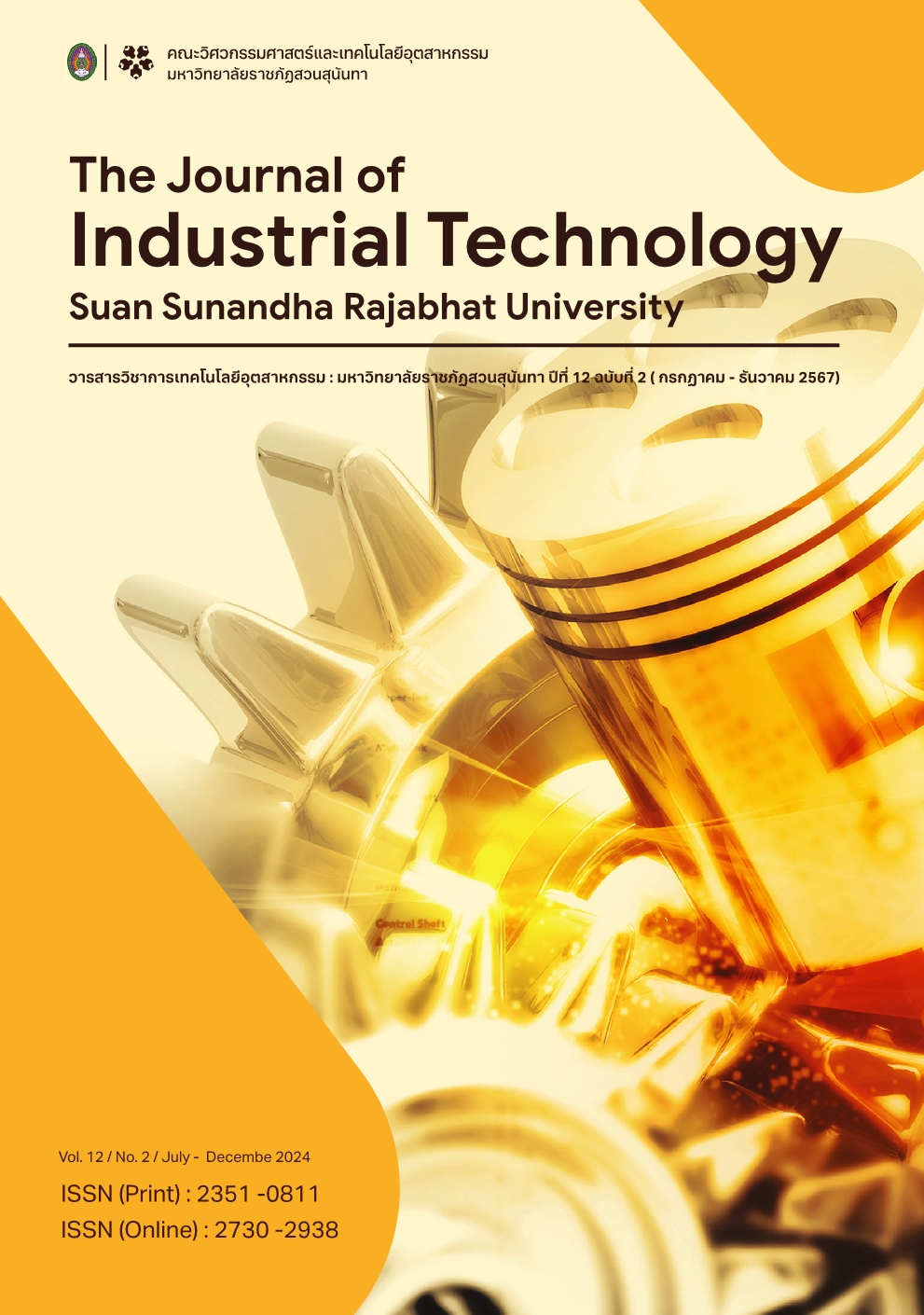Quantifying Innovation Potential: An Index System and Model for China's High-Tech Industry Development Zone
คำสำคัญ:
Evaluation index system, Evaluation model, Innovation capability, High-tech zone Industryบทคัดย่อ
The aim of this study is to investigate the innovative capacity of high-tech zones in China. To this end, we have developed an evaluation index system and established a solid theoretical basis for it. Our evaluation system includes four first-level indicators, eight second-level indicators and 28 third-level indicators, whose weights were determined using the entropy weight method. In addition, we applied the catastrophe progression method to comprehensively assess the innovative capacity of high-tech zones, capture innovation dynamics and identify areas for improvement. The novelty of this study lies in the construction of a multi-level index system based on the framework of cybernetics and information theory. By combining the entropy weighting method and the catastrophe progression method, we provide for the first time a scientific and comprehensive method for assessing innovation capability. Our research not only reveals the strengths and weaknesses of the innovation capability of high-tech zones, but also provides practical assessment tools and theoretical support for their further development. The results show that the systematic index system and scientific assessment methods can effectively evaluate the innovation capability of high-tech zones and provide deep insights and suggestions for improvement. Overall, our study provides valuable insights and practical guidance for the continuous innovation and development of high-tech zones in China.
เอกสารอ้างอิง
A. V. Bruno and T. T. Tyebjee, “The environment for entrepreneurship, “Prentice-Hall, Englewood Cliffs, 1982.
E. J. Malecki, “The R&D location decision of the firm and creative regions: A survey,” Technovation, 1987, vol. 6, no. 3, pp. 205-222.
E. J. Malecki and P. Nijkamp, “Technology and regional development: Some thoughts on policy,” Environment and Planning C: Government and Policy, 1988, vol. 6, pp. 383-399.
J. C. Chung and C. H. Chin, “A multiple criteria evaluation of hightech industries for the science-based industrial park in Taiwan,” Information & Management, 2004, vol. 41, pp. 839-851.
S. X. Zeng, X. M. Xie, and C. Tam, “Evaluating innovation capabilities for science parks: A system model,” Technological and Economic Development of Economy, 2010, vol. 16, no. 3, pp. 397-413.
J. Song, Z. Li, and L. Wu, “Establishing a scientific evaluation system to guide the transformation and upgrading of industrial parks: An analysis of the evaluation index system for national high-tech zones (Revised edition 2013),” China HighTech Zones, 2013, vol. 8, pp. 136-141.
G. Xu, “Enhancing independent innovation capability and accelerating the construction and development of national high-tech zones,” China Soft Science, 2006, vol. 8, pp. 1-8.
D. Zhao and X. Li, “The impact of specialization in China's national high-tech zones on independent innovation capability,” Science Studies, 2007, vol. 25, no. 12, pp. 500-505.
F. Wang, “Research on cultivating and measuring independent innovation capability of China's national hightech zones,” 2010, Doctoral dissertation, Jilin University, pp. 112-150.
S. Hu, J. Yang, and J. Zuo, “Indicator system and evaluation model of independent innovation capability of high-tech zones,” Journal of Wuhan University of Technology (Information & Management Engineering Edition), 2010. vol. 32, no. 6, pp. 974-977.
Y. Fang and F. Liu, “Research on the evaluation of innovation capability in China's national high-tech zones,” Journal of Dalian University of Technology (Social Sciences), 2014, vol. 35, no. 4, pp. 26-32.
J.-X. Zhang and Y. Chen, “Evaluation of innovative industrial clusters cultivation capacity in national hightech zones,” Science and Technology Management Research, 2022, vol. 20, pp. 57-64.
L. Zhang, C. Guo, C. Wang, Y. Shang, and J. Jia, “Evaluation of innovation capacity of national high-tech zones in Shandong Province based on efficacy coefficient method,” Science and Management, 2022, vol. 06, pp. 85-92.
Y. Guo and X. Wang, “Research the indexes of innovation capacity evaluation systems of high-tech zones in Henan Province,” Henan Science and Technology, 2022, vol. 05, pp. 154-157.
F. Ren, “Research on constructing an evaluation index system of the innovation ability of high-tech zones,” Enterprise Technology and Development, 2020, vol. 06, pp. 25-29.
Q. Ding, “Evaluation of innovation capacity of national high-tech zones based on DEA-Malmquist index,” Modern Business Industry, 2019, vol. 35, pp. 10-12.
C. Su, J. Xie, and S. Hu, “Research on the evaluation of the innovation capacity of high-tech zones in the city cluster in the middle reaches of the Yangtze River based on the Catastrophe progression method,” Value Engineering, 2018, vol. 12, pp. 234-237.
L. A. Zadeh, “Fuzzy sets,” Information Control, 1965, vol. 8, pp. 338-353.
J. C. Bezdek, “Pattern recognition with fuzzy objective function algorithms.” New York: Plenum Press, 1981.
R. Krishnapuram and J. A. Keller, “Possibilistic approach to clustering,” IEEE Transactions on Fuzzy Systems, 1993, vol. 1, no. 2, pp. 98-110.
P. Kaur and A. A. Gosain, “Densityoriented fuzzy c-means clustering algorithm for recognizing original cluster shapes from noisy data,” International Journal of Innovative Computing and Applications, 2011, vol. 3, no. 2, pp. 77-87.
J. L. Xie and S. H. Hu, “Research on the 'double-four' structure of the national high-tech zone innovation network and its factor correlation,” Modernization of Management, 2014, vol. 1, pp. 45-47.
J. Xie and S. Hu, “Research on the structural framework and operation mechanism of the national high-tech zone innovation system,” Economic System Reform, 2014, vol. 2, pp. 97-101.
J. Xie, S. Hu, and Y. Y. Jiang, “A study on the spatial differentiation of competitiveness of national hightech zones based on the Catastrophe progression method,” Science and Technology Management, 2011, vol. 12, pp. 101-108.
L. Yang and D. Wang, “Research on enhancing e-commerce collaborative innovation capability in countries along the 'Belt and Road,” Resource Development and Market, 2019, vol. 04, pp. 533-542.
J. Zhang and Y. Chen, “Evaluation of innovative industrial clusters cultivation capability in national high-tech zones,” Science and Technology Management Research, 2022, vol. 20, pp. 57-64.
Y. W. Zhang and L. Wang, “Research on the evaluation index system of regional innovation capability in Gansu Province,” Gansu Science and Technology, 2022, vol. 11, pp. 47-52.
W. Fu and L. Chu, “Research on the Evaluation of High-quality Development of the Manufacturing Industry under the Perspective of Yangtze River Delta Integration - TOPSIS Evaluation Model Based on Improved CRITICEntropy Weight Method Combined Weights,” Industrial Technology and Economics, 2020, vol. 09, pp. 145-152.
S. Zhang, M. Zhang, and G. T. Chi, “Science and technology evaluation model based on entropy weight method and its empirical research,” Journal of Management, 2010, vol. 01, pp. 34-42.
J. L. Xie, S. H. Hu, and Y. Y. Jiang, “Research on the spatial differentiation of national high-tech zone competitiveness based on the catastrophe progression method,” Science of Science and Management of S & T, 2011, vol. 32, no. 12, pp. 101-108.
ดาวน์โหลด
เผยแพร่แล้ว
รูปแบบการอ้างอิง
ฉบับ
ประเภทบทความ
สัญญาอนุญาต
ลิขสิทธิ์ (c) 2024 คณะวิศวกรรมศาสตร์และเทคโนโลยีอุตสาหกรรม มหาวิทยาลัยราชภัฎสวนสุนันทา

อนุญาตภายใต้เงื่อนไข Creative Commons Attribution-NonCommercial-NoDerivatives 4.0 International License.
บทความที่ได้รับการตีพิมพ์เป็นลิขสิทธิ์ของคณะวิศวกรรมศาสตร์และเทคโนโลยีอุตสาหกรรม มหาวิทยาลัยราชภัฎสวนสุนันทา
ข้อความที่ปรากฏในบทความแต่ละเรื่องในวารสารวิชาการเล่มนี้เป็นความคิดเห็นส่วนตัวของผู้เขียนแต่ละท่านไม่เกี่ยวข้องกับมหาวิทยาลัยราชภัฎสวนสุนันทา และคณาจารย์ท่านอื่นๆในมหาวิทยาลัยฯ แต่อย่างใด ความรับผิดชอบองค์ประกอบทั้งหมดของบทความแต่ละเรื่องเป็นของผู้เขียนแต่ละท่าน หากมีความผิดพลาดใดๆ ผู้เขียนแต่ละท่านจะรับผิดชอบบทความของตนเองแต่ผู้เดียว








